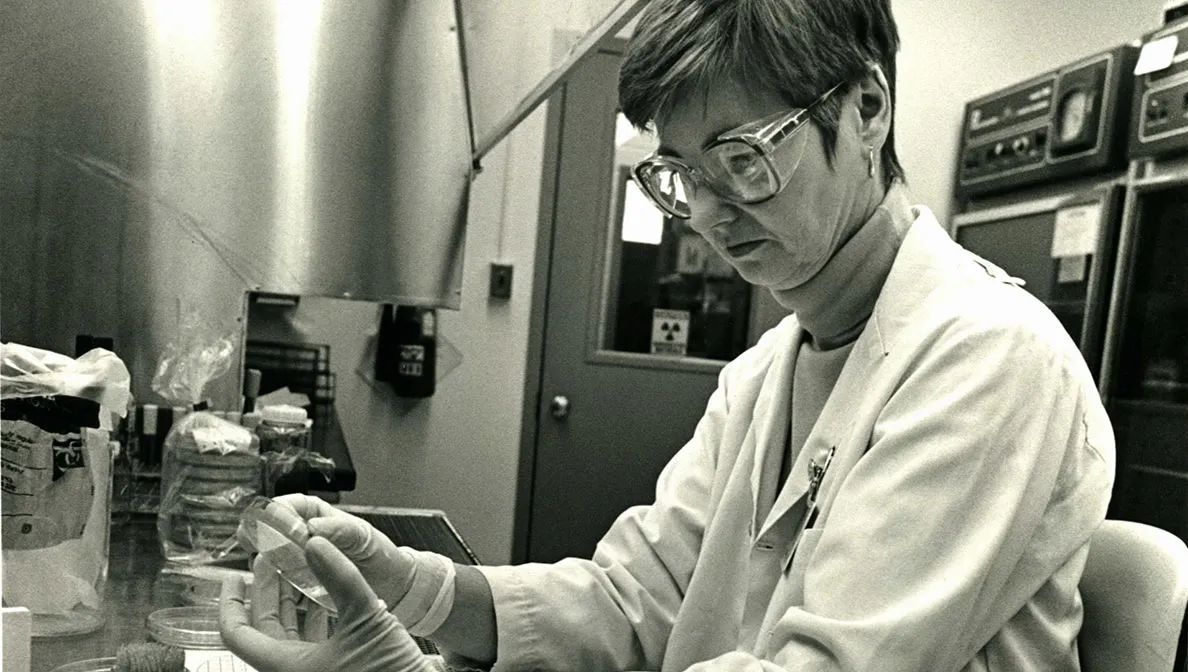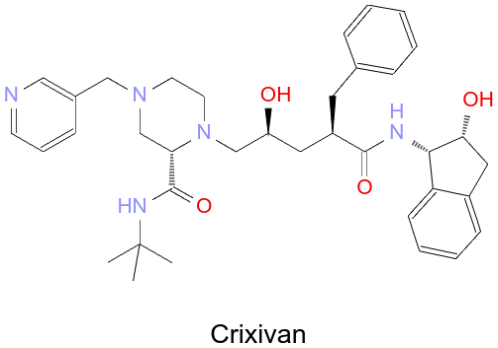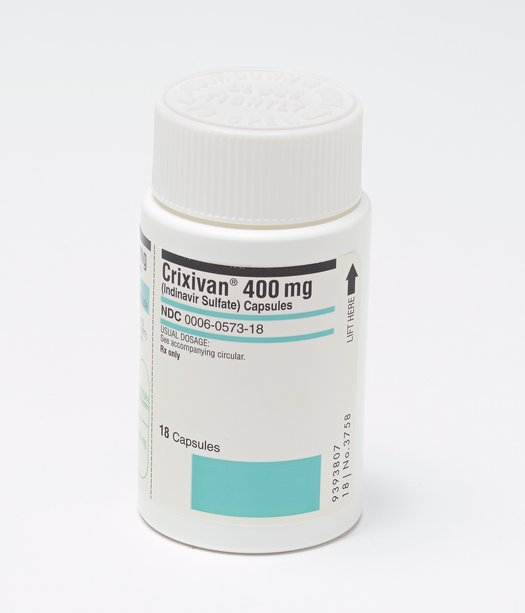- 1. Getting Started
-
2.
First Semester Topics
-
General Chemistry Review
- Introduction
- Electron Configurations of Atoms
- QM Description of Orbitals
- Practice Time - Electron Configurations
- Hybridization
- Closer Look at Hybridization
- Strategy to Determine Hybridization
- Practice Time! - Hybridization
- Formal Charge
- Practice Time - Formal Charge
- Acids-bases
- Practice Time - Acids and Bases
- Hydrogen Bonding is a Verb!
- Progress Pulse
-
Structure and Bonding
- Chemical Intuition
- From Quantum Mechanics to the Blackboard: The Power of Approximations
- Atomic Orbitals
- Electron Configurations of Atoms
- Electron Configurations Tutorial
- Practice Time - Structure and Bonding 1
- Lewis Structures
- Drawing Lewis Structures
- Valence Bond Theory
- Valence Bond Theory Tutorial
- Hybridization
- Polar Covalent Bonds
- Formal Charge
- Practice Time - Structure and Bonding 2
- Curved Arrow Notation
- Resonance
- Electrons behave like waves
- MO Theory Intro
- Structural Representations
- Progress Pulse
-
Acids/Base and Reactions
- Reactions
- Reaction Arrows: What do they mean?
- Thermodynamics of Reactions
- Acids Intro
- Practice Time! Generating a conjugate base.
- Lewis Acids and Bases
- pKa Scale
- Practice Time! pKa's
- Predicting Acid-Base Reactions from pKa
- Structure and Acidity
- Structure and Acidity II
- Practice Time! Structure and Acidity
- Curved Arrows and Reactions
- Nucleophiles
- Electrophiles
- Practice Time! Identifying Nucleophiles and Electrophiles
- Mechanisms and Arrow Pushing
- Practice Time! Mechanisms and Reactions
- Energy Diagrams and Reactions
- Practice Time! - Energy Diagrams
- Progress Pulse
- Introduction to Retrosynthesis
-
Alkanes and Cycloalkanes
- Introduction to Hydrocarbons and Alkanes
- Occurrence
- Functional Groups
- Practice Time! Functional Groups.
- Structure of Alkanes - Structure of Methane
- Structure of Alkanes - Structure of Ethane
- Naming Alkanes
- Practice Time! Naming Alkanes
- Alkane Isomers
- Relative Stability of Acyclic Alkanes
- Physical Properties of Alkanes
- Ranking Boiling Point and Solubility of Compounds
- Conformations of Acyclic Alkanes
- Practice Time! Conformations of acyclic alkanes.
- Conformations of Cyclic Alkanes
- Naming Bicyclic Compounds
- Stability of Cycloalkane (Combustion Analysis)
- Degree of Unsaturation
-
Stereochemistry
- Enalapril in ACE
- Constitutional and Stereoisomers
- Chirality or Handedness
- Drawing a Molecules Mirror Image
- Exploring Mirror Image Structures
- Enantiomers
- Drawing Enantiomers
- Practice Time! Drawing Enantiomers
- Identifying Chiral Centers
- Practice Time! Identifying Chiral Molecules
- CIP (Cahn-Ingold-Prelog) Priorities
- Determining R/S Configuration
- Diastereomers
- Meso Compounds
- Fischer Projections
- Fischer Projections: Carbohydrates
- Measuring Chiral Purity
- Practice Time! - Determining Chiral Purity and ee
- Chirality and Drugs
- Chiral Synthesis
- Prochirality
- Converting Fischer Projections to Zig-zag Structures
- Practice Time! - Assigning R/S Configurations
-
Alkenes and Addition Reactions
- The Structure of Alkenes
- Alkene Structure - Ethene
- Physical Properties of Alkenes
- Naming Alkenes
- Health Insight - BVO (Brominated Vegetable Oil)
- E/Z and CIP
- Stability of Alkenes
- H-X Addition to Alkenes: Hydrohalogenation
- Practice Time - Hydrohalogenation
- X2 Addition to Alkenes: Halogenation
- HOX addition: Halohydrins
- Practice Time - Halogenation
- Hydroboration/Oxidation of Alkenes: Hydration
- Practice Time - Hydroboration-Oxidation
- Oxymercuration-Reduction: Hydration
- Practice Time - Oxymercuration/Reduction
- Oxidation and Reduction in Organic Chemistry
- Calculating Oxidation States of Carbon
- Identifying oxidation and reduction reactions
- Practice Time - Oxidation and Reduction in Organic
- Oxidation
- Reduction
- Capsaicin
-
Alkynes
- Structure of Ethyne (Acetylene)
- Naming Alkynes
- Practice Time! - Naming Alkynes
- Physical Properties of Alkynes
- Preparation of Alkynes
- Practice Time! - Preparation of Alkynes
- H-X Addition to Alkynes
- X2 Addition
- Hydration
- Reduction of Alkynes
- Practice Time! - Addition Reactions of Alkynes
- Oxidative Cleavage of Alkynes
- Alkyne Acidity and Acetylide Anions
- Reactions of Acetylide Anions
- Retrosynthesis Revisted
- Practice Time! - Multistep Synthesis Using Acetylides
-
Alkyl Halides and Alcohol
- Naming Alkyl Halides
- Naming Alcohols
- Classes of Alcohols and Alkyl Halides
- Practice Time! - Naming Alkyl Halides
- Practice Time! - Naming Alcohols
- Physical Properties of Alcohols and Alkyl Halides
- Structure and Reactivity of Alcohols
- Structure and Reactivity of Alkyl Halides
- Preparation of Alkyl Halides and Tosylates from Alcohols
- Practice Time! - Alcohols to Alkyl Halides
- Preparation of Alkyl Halides from Alkenes; Allylic Bromination
- Strategy for Predicting Products of Allylic Brominations
- Practice Time! - Allylic Bromination
-
Substitutions (SN1/SN2) and Eliminations (E1/E2)
- Introduction
- Solvents
- SN1 Reaction: The Carbocation Pathway
- SN2 Reactions: The Concerted Backside Attack
- SN1 vs. SN2: Choosing the Right Path
- Application: Cardura (Doxazosin)
- E1 Reactions: Elimination via Carbocations
- E2 Reactions: The Concerted Elimination
- E1cB: The Conjugate Base Elimination Pathway
- Substitution versus Elimination
- Dienes, Allylic and Benzylic systems
-
General Chemistry Review
-
3.
Second Semester Topics
- Arenes and Aromaticity
-
Reactions of Arenes
- Electrophilic Aromatic Substitution
- EAS-Halogenation
- EAS-Nitration
- Practice Time - Synthesis of Aniline
- EAS-Alkylation
- Practice Time - Friedel Crafts Alkylation
- EAS-Acylation
- Practice Time - Synthesis of Alkyl Arenes
- EAS-Sulfonation
- Practice Time - EAS
- Donation and Withdrawal of Electrons
- Regiochemistry in EAS
- Practice Time - Directing Group Effects
- Synthesizing Disubstituted Benzenes: Effects of Substituents on Rate and Orientation
- Steric Considerations
- Strategies for Synthesizing Disubstituted Benzenes
- NAS - Addition/Elimination
- NAS - Elimination/Addition - Benzyne
- Alcohols and Phenols
-
Ethers and Epoxides
- Intro and Occurrence
- Crown Ethers and Cryptands
- Preparation of Ethers
- Reactions of Ethers
- Practice Time - Ethers
- Preparation of Epoxides
- Reactions of Epoxides - Acidic Ring Opening
- Practice Time - Acidic Ring Opening
- Reactions of Epoxides - Nucleophilic Ring Opening
- Practice Time - Nucleophilic Ring opening
- Application - Epoxidation in Reboxetine Synthesis
- Application - Nucleophilic Epoxide Ring Opening in Crixivan Synthesis
- Physical Properties of Ethers and Epoxides
- Naming Ethers and Epoxides
-
Aldehydes and Ketones
- Naming Aldehydes and Ketones
- Physical Properties of Ketones and Aldehydes
- Practice Time - Naming Aldehydes/Ketones
- Nucleophilic addition
- Addition of Water - Gem Diols
- Practice Time - Hydration of Ketones and Aldehydes
- Addition of Alcohols - Hemiacetals and Acetals
- Acetal Protecting Groups
- Hemiacetals in Carbohydrates
- Practice Time - Hemiacetals and Acetals
- Addition of Amines - Imines
- Addition of Amines - Enamines
- Practice Time - Imines and Enamines
- Application - Imatinab Enamine Synthesis
- Addition of CN - Cyanohydrins
- Practice Time - Cyanohydrins
- Application - Isentress Synthesis
- Addition of Ylides - Wittig Reaction
- Practice Time - Wittig Olefination
- Structure of Ketones and Aldehydes
- Carboxylic Acids and Derivatives
- Enols and Enolates
- Condensation Reactions
-
4.
NMR, IR, UV and MS
- Spectroscopy
-
HNMR
- Nuclear Spin
- Interpreting
- Chemical Shift
- Practice Time! - Chemical Shift
- Equivalency
- Indentifying Homotopic, Enantiotopic and Diastereotopic Protons
- Practice Time! - Equivalency
- Intensity of Signals
- Spin Spin Splitting
- Practice Time! - Spin-Spin Splitting
- Primer on ¹³C NMR Spectroscopy
- Alkanes
- Alkynes
- Alcohols
- Alkenes
- Coupling in Cis/Trans Alkenes
- Ketones
- HNMR Practice 1
- HNMR Practice 2
- HNMR Practice 3
- HNMR Practice 4
- Exchangeable Protons and Deuterium Exchange
- IR - Infrared Spectroscopy
- UV - Ultraviolet Spectroscopy
- Mass Spectrometry
-
5.
General Chemistry
- General Chemistry Lab
- Strategy for Balancing Chemical Reactions
- Calculator Tips for Chemistry
- Significant Figures
- Practice Time! Significant Figures
- Spreadsheets - Getting Started
- Spreadsheets - Charts and Trend lines
- Standard Deviation
- Standard Deviation Calculations
- Factor Labels
- Practice Time! - Factor Labels
- Limiting Reagent Problem
- Percent Composition
- Molar Mass Calculation
- Average Atomic Mass
- Empirical Formula
- Practice time! Empirical and Molecular Formulae
- Initial Rate Analysis
- Practice Time! Initial Rate Analysis
- Solving Equilibrium Problems with ICE
- Practice Time! Equilibrium ICE Tables
- Le Chatelier's
- Practice Time! Le Chatelier's Principle
- 6. Organic Chemistry Lab
- 7. Tools and Reference
-
8.
Tutorials
- Reaction Mechanisms (introduction)
- Factor Labels
- Acetylides and Synthesis
- Drawing Cyclohexane Chair Structures
- Drawing Lewis Structures
- Aromaticity Tutorial
- Common Named Aromatics (Crossword Puzzle)
- Functional Groups (Flashcards)
- Characteristic Reactions of Functional Groups
- Alkyl and Alkenyl Groups
- Valence Bond Theory
- Alkane Nomenclature
-
9.
The Alchemy of Drug Development
- Ivermectin: From Merck Innovation to Global Health Impact
- The Fen-Phen Fix: A Weight Loss Dream Turned Heartbreak
- The Asymmetry of Harm: Thalidomide and the Power of Molecular Shape
- Semaglutide (Ozempic): From Lizard Spit to a Once-Weekly Wonder
- From Cocaine to Novocain: The Development of Safer Local Anesthesia
- The Crixivan Saga: A Targeted Strike Against HIV
- The story of Merck’s COX-2 inhibitor, Vioxx (rofecoxib)
- The Accidental Aphrodisiac: The Story of Viagra
- THC: A Double-Edged Sword with Potential Neuroprotective Properties?
- Ritonavir Near Disaster and Polymorphism
Clear History
The Crixivan Saga: A Targeted Strike Against HIV
The Crixivan Saga: A Targeted Strike Against HIV
The late 1980s and early 1990s were a time of grim reality for those living with HIV. The announcement by basketball superstar Magic Johnson in 1991 that he had contracted the virus sent shockwaves around the world, highlighting the pervasive nature of the epidemic and the urgent need for effective treatments. The virus, a relentless invader of the immune system, marched forward seemingly unstoppable, leading to the devastating consequences of AIDS. While early treatments offered some respite, the need for more effective and targeted therapies was desperate. Within the walls of Merck, a dedicated team of scientists embarked on a quest, a high-stakes endeavor to disrupt the very machinery of this insidious virus. I was fortunate to be part of this effort, contributing directly to the iodohydoxylation process, a critical step in the synthesis of what would become Crixivan.

The focus of their attention was HIV protease, a crucial enzyme that the virus relied upon to cleave large precursor proteins into the smaller, functional proteins needed for its replication. If they could somehow block this protease, they could essentially halt the virus in its tracks, preventing it from producing new infectious particles. This was the elegant and ambitious goal that fueled countless hours of research, experimentation, and intense collaboration. The intricacies of Crixivan's synthesis, including the iodohydoxylation step I was involved in, serve as valuable examples that I explore throughout OpenOChem Learn to illustrate the challenges and triumphs of modern organic chemistry.
The journey was far from straightforward. It involved sifting through libraries of chemical compounds, meticulously designing and synthesizing new molecules, and rigorously testing their efficacy against the viral enzyme. There were countless dead ends, promising leads that ultimately fizzled out, and the constant pressure of knowing that every day of delay meant more suffering for those affected by the epidemic. The complexities of achieving efficient and scalable synthesis, as exemplified by the multi-step process required for Crixivan – including the iodohydoxylation I worked on – are themes I delve into in my writing.
But the Merck team persevered, driven by a profound sense of urgency and the unwavering belief in the power of scientific innovation. They employed cutting-edge techniques in structural biology, allowing them to visualize the intricate three-dimensional structure of the HIV protease. This detailed understanding became their blueprint, guiding the design of molecules that could fit snugly into the enzyme's active site, like a key in a lock, and effectively disable it. The principles of stereochemistry and regioselectivity, which were so important in the synthesis of Crixivan and particularly in the iodohydoxylation, are concepts I often return to in my book.
Among the many avenues explored, the concept of peptidomimetics – molecules that mimic the structure of peptides but are more stable and drug-like – proved particularly fruitful. Researchers painstakingly crafted and refined these molecules, optimizing their potency, selectivity (to ensure they targeted the viral enzyme and not human proteins), and pharmacokinetic properties (how the drug would be absorbed, distributed, metabolized, and excreted by the body). The strategic choices made during the synthesis of Crixivan, including the iodohydoxylation, provide excellent case studies for discussing these optimization processes in my book.

The development of indinavir, which would eventually be marketed as Crixivan, was a testament to this relentless pursuit. It emerged from years of dedicated effort, representing a triumph of rational drug design. Preclinical studies showed remarkable promise, demonstrating the compound's ability to potently inhibit HIV replication in laboratory settings. My early work on the iodohydoxylation step was just one piece of this larger puzzle, a detail I explore to illustrate the interconnectedness of the drug development process in my OpenOChem Learn site.
The transition to human clinical trials was met with both hope and trepidation. The results, however, were nothing short of groundbreaking. Crixivan, particularly when used in combination with other antiretroviral drugs, led to dramatic reductions in viral load – the amount of HIV in the blood – and significant increases in CD4+ T cell counts, the hallmark of a healthy immune system. For many, it was as if a death sentence had been commuted.
The introduction of Crixivan in 1996 marked a turning point in the fight against HIV/AIDS. It ushered in the era of highly active antiretroviral therapy (HAART), a combination of drugs that could effectively suppress the virus and allow people with HIV to live longer, healthier lives. The fear and despair that had long overshadowed the HIV epidemic began to recede, replaced by a sense of cautious optimism.
Crixivan was not without its challenges. It required strict adherence to a demanding dosing schedule and was associated with certain side effects. However, its impact on the lives of countless individuals was undeniable. It stood as a powerful symbol of what human ingenuity and scientific dedication could achieve in the face of a formidable foe. My early contributions to its synthesis, particularly the iodohydoxylation, remain a point of personal significance.

My involvement with Crixivan has continued to resonate throughout my career. Recognizing the ongoing importance of efficient synthetic methodologies, my research group has more recently developed a novel approach to iodohydroxylating an important intermediate in the Crixivan synthesis. This work, which builds upon my earlier experiences, highlights the continuous evolution of chemical techniques and offers a potential route towards more sustainable and cost-effective production. This journey, from my initial work at Merck to my current research, and the lessons learned from the synthesis of Crixivan, form a significant thread throughout the OpenOChem Learn website.
The story of Crixivan is not just a scientific success story; it is a story of hope, resilience, and the profound impact that targeted therapies can have on human health. It serves as a reminder of the power of scientific inquiry to address even the most daunting challenges and to transform the lives of millions. And for those who were part of that journey, like myself, it remains a source of immense pride and a testament to the power of collective effort in the pursuit of a healthier future.